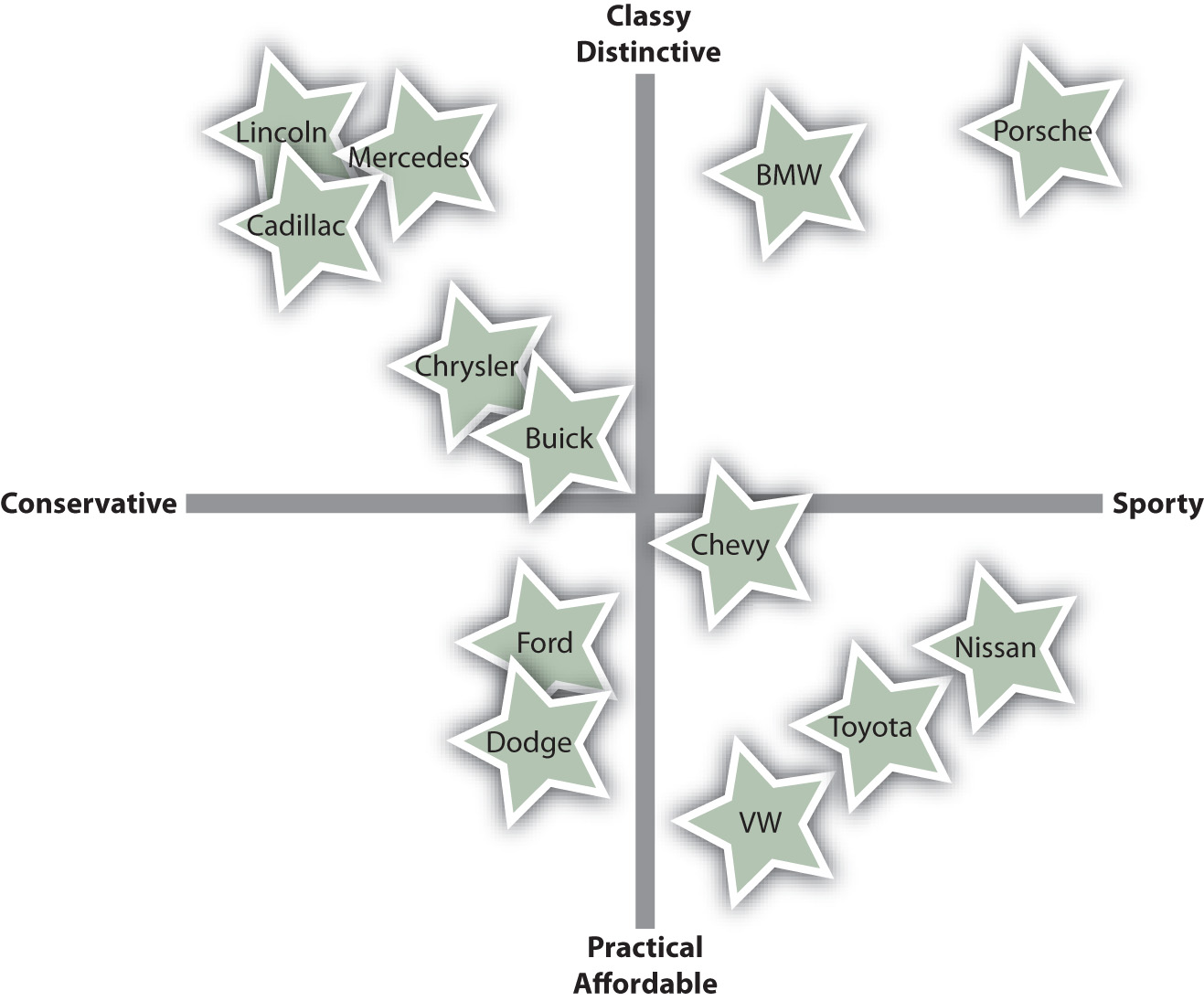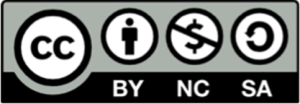9.2 Positioning and Repositioning Offerings
After reading this section, students should be able to …
- Explain why positioning is an important element when it comes to targeting consumers.
- Describe how a product can be positioned and mapped.
- Explain what repositioning is designed is to do.
Why should buyers purchase your offering versus another? If your product faces competition, you will need to think about how to “position” it in the marketplace relative to competing products. After all you don’t want the product to be just another “face in the crowd” in the minds of consumers. Positioning is how consumers perceive a product relative to the competition. Companies want to have a distinctive image and offering that stands out from the competition in the minds of consumers.
One way to position your product is to plot customer survey data on a perceptual map. A perceptual map is a two-dimensional graph that visually shows where your product stands, or should stand, relative to your competitors, based on criteria important to buyers. The criteria can involve any number of characteristics—price, quality, level of customer service associated with the product, and so on. An example of a perceptual map is shown in Figure 6.10 “An Example of a Perceptual Map”. To avoid head-to-head competition with your competitors, you want to position your product somewhere on the map where your competitors aren’t clustered.

(Source: Adapted from http://en.wikipedia.org/wiki/Perceptual_mapping.)
Many companies use taglines in their advertising to try to position their products in the minds of the buyer—where they want them, of course. A tagline is a catchphrase designed to sum up the essence of a product. You perhaps have heard Wendy’s tagline “It’s better than fast food.” The tagline is designed to set Wendy’s apart from restaurants like McDonald’s and Burger King—to plant the idea in consumers’ heads that Wendy’s offerings are less “fast foodish,” given the bad rap fast food gets these days.
Sometimes firms find it advantageous to reposition their products—especially if they want the product to begin appealing to different market segments. Repositioning is an effort to “move” a product to a different place in the minds of consumers. The i-house, a prefab house built by Clayton Homes, a mobile home manufacturer, is an example. According to the magazine Popular Mechanics, the i-house “looks like a house you’d order from IKEA, sounds like something designed by Apple, and consists of amenities—solar panels, tankless water heaters and rainwater collectors—that one would expect to come from an offbeat green company out of California selling to a high-end market” (Schwartz, 2009). A Clayton Homes spokesperson says, “Are we repositioning to go after a new market? I would think we are maintaining our value to our existing market and expanding the market to include other buyers that previously wouldn’t have considered our housing product (1).”

(Source: http://www.claytonihouse.com.)
Recently, Porsche unveiled its new line of Panamera vehicles at a Shanghai car show. The car is a global model, but unlike Porsche’s other cars, it’s longer. Why? Because rich car buyers in China prefer to be driven by chauffeurs (Gapper, 2009). How do you think Porsche is trying to reposition itself for the future?
Audio Clip : Interview with Apurva Ghelani
Listen to Ghelani’s advice to students interested in working in his area of marketing.
Review
- If a product faces competition, its producer will need to think about how to “position” it in the marketplace relative to competing products.
- Positioning is how consumers view a product relative to the competition.
- A perceptual map is a two-dimensional graph that visually shows where a product stands, or should stand, relative to its competitors, based on criteria important to buyers. Sometimes firms find it advantageous to reposition their products.
- Repositioning is an effort to “move” a product to a different place in the minds of consumers.
References:
-
“Clayton ‘i-house’ Is Giant Leap from Trailer Park,” Knoxvillebiz.com, May 6, 2009, http://www.knoxnews.com/ news/2009/may/06/clayton-i-house-giant-leap-trailer-park/ (accessed April 13, 2012).
-
Gapper, J., “Why Brands Now Rise in the East,” Financial Times, April 23, 2009, 9.
-
Schwartz, A., “Clayton Homes’ i-house Combines Energy Efficiency and Modular Affordability,” Fast Company, May 4, 2009, http://www.fastcompany.com/blog/ariel-schwartz/sustainability/clayton-homes-75kenergy-efficient-i-house (accessed December 9, 2009).
Sources:
Section 9.1 Growth Strategies is edited and adapted from the chapter ‘The Strategy Diamond’ appearing in the textbook, ‘Strategic Management’ Copyright © 2020 by John Morris licensed under a Creative Commons Attribution-NonCommercial 4.0 International License. 9.2 Positioning and Repositioning Offerings and Section 9.3 Branding, Labeling, and Packaging are edited versions of the chapter ‘Chapter 10: Creating Offerings’ from the textbook ‘Principles of Marketing,’ authored by University of Minnesota Libraries Publishing edition, 2015 – this book was adapted from a work originally produced in 2010 by a publisher who has requested that it not receive attribution. Section 9.4: Adopting a Customer Centric Strategy is edited and adapted from the chapter ‘Leading a Customer Centric Strategy’ appearing in the textbook ‘Customer Centric Strategy’ by Kerri Shields, Toronto, CA published by eCampusOntario, Copyright Year: 2021. Section 9.5 Building Loyalty and Co-Creating With Customers is edited and adapted from the chapter ‘Engage: building Loyalty and Co-Creating With Customers’ appearing in the textbook ‘Digital Marketing Strategy’ by Pierre-Yann Dolbec, Concordia University Research, published by Concordia University Open Textbooks, Copyright Year: 2021.


